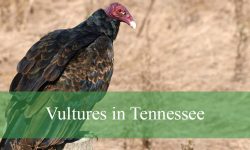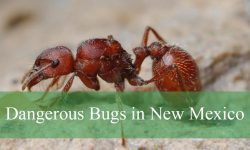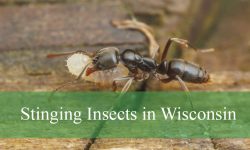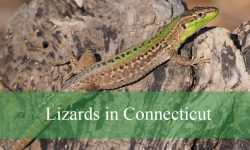Across Texas, white caterpillars are a fascinating sight in woodlands, gardens, and even city parks. These fuzzy, pale-colored larvae belong to several moth species, each with its own unique look, food preferences, and habits. Some are harmless wanderers, while others are well-known for their role in defoliating trees.
Identifying white caterpillars can be tricky because many appear similar at first glance. However, close observation of their markings, tufts of hair, and host plants helps distinguish one species from another. From the striking Hickory Tussock Moth Caterpillar to the web-building Fall Webworm, these insects are both important to ecosystems and sometimes considered pests.
In Texas, their presence is most noticeable from summer into fall, when caterpillars are actively feeding and preparing to pupate. While their fuzzy coats may look soft, many have defensive hairs that can irritate human skin. Learning more about them allows us to appreciate their role in nature while protecting our trees and landscapes.
Types of White Caterpillars Found in Texas
Hickory Tussock Moth Caterpillar (Lophocampa caryae)
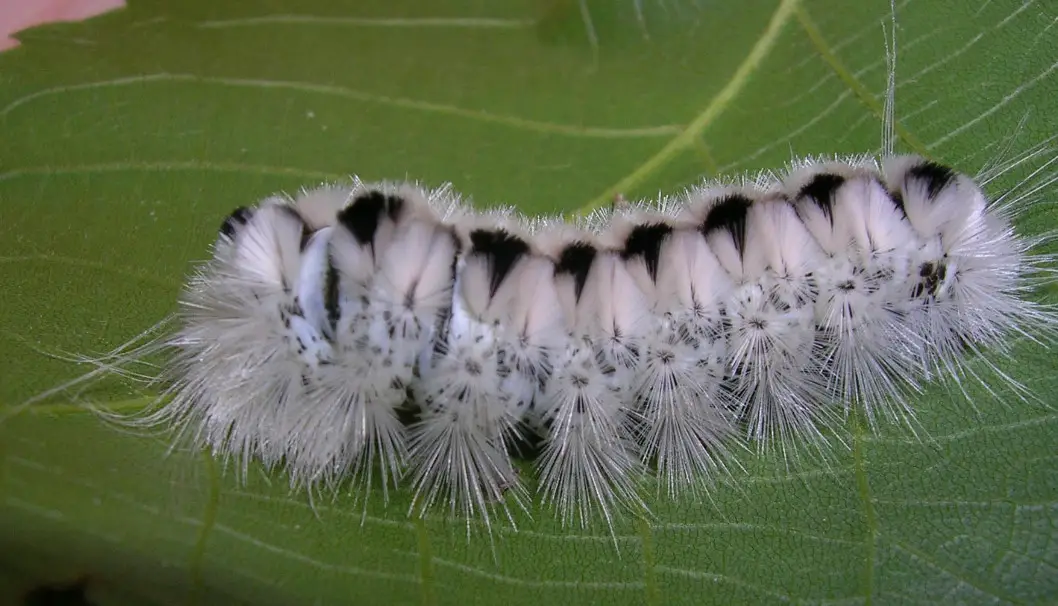
The Hickory Tussock Moth Caterpillar is a striking white caterpillar often found in wooded areas of Texas, particularly where hickory, pecan, and walnut trees are abundant. Its body is covered with long, white, hairlike setae and features distinctive black tufts along its back. These tufts, combined with small black spots on each segment, make it easy to identify compared to other fuzzy caterpillars. While its appearance is appealing, the hairs can cause skin irritation in sensitive individuals.
In Texas, this caterpillar is usually spotted in late summer and early fall when it is actively feeding. It spends much of its life in the canopy of deciduous trees, feeding on the leaves of hickory, pecan, walnut, and other hardwoods. This heavy feeding can cause localized defoliation, though large outbreaks are not common in the state.
Behaviorally, the Hickory Tussock Moth Caterpillar is solitary in its feeding habits, unlike webworms that cluster together. It moves slowly across leaves and branches, consuming foliage until it reaches full size. Once mature, it forms a cocoon in leaf litter or sheltered areas before emerging as a light-brown moth with white-spotted wings.
This caterpillar plays an important ecological role by serving as prey for birds and predatory insects. However, its urticating hairs offer a natural defense, discouraging predators from feeding on it. In Texas, caution should be taken when handling them, as skin irritation or mild rashes are common after direct contact.
American Dagger Moth Caterpillar (Acronicta americana)
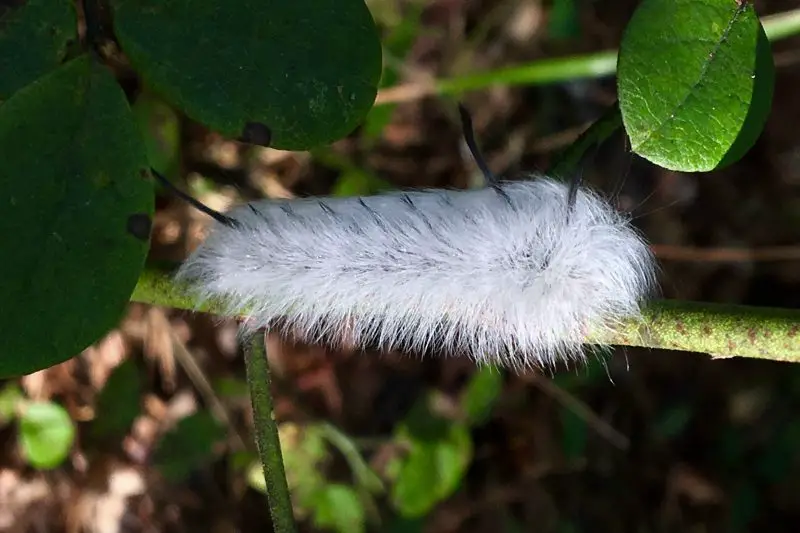
The American Dagger Moth Caterpillar is one of the larger white caterpillars found in Texas woodlands and suburban areas. When young, it is pale and covered in long, silky white hairs, but as it matures, it often develops yellowish tones with distinctive black tufts along its back. Its most recognizable feature is the pair of long black hair pencils that extend from its body, making it stand out from similar fuzzy caterpillars.
This species is common in Texas during late summer and fall, especially in oak-rich forests and residential neighborhoods with shade trees. Its host plants include a wide variety of hardwoods such as oak, maple, elm, birch, and sycamore. Caterpillars can be found crawling along branches, tree trunks, or even wandering on the ground in search of a pupation site.
Behaviorally, the American Dagger Moth Caterpillar is a voracious feeder and can consume large amounts of foliage in a short time. Despite their appetite, they rarely cause lasting damage to mature trees. They tend to be more noticeable in the wandering stage when they leave their host plant to find a spot to spin a cocoon in leaf litter or under bark.
In Texas, these caterpillars also pose a mild health concern, as their long hairs can cause skin irritation or rashes upon contact. Birds, however, tend to avoid them due to their hairy defense. After pupation, they transform into large grayish moths with subtle dark markings on their wings, well-camouflaged against tree bark.
Sycamore Tussock Moth Caterpillar (Halysidota harrisii)
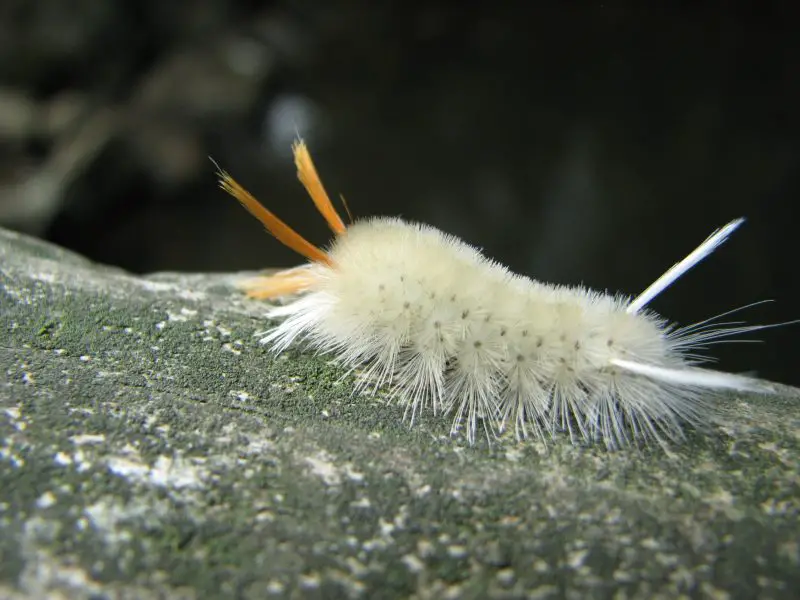
The Sycamore Tussock Moth Caterpillar is another white caterpillar found across parts of Texas, especially in areas where sycamore trees grow. This species is easy to recognize with its fuzzy white body, accented by two pairs of bright orange tufts—one near the head and one near the tail. Its hairs are shorter and neater compared to the shaggy appearance of other tussock caterpillars, giving it a cleaner, more symmetrical look.
As its name suggests, the caterpillar primarily feeds on sycamore trees, although it occasionally consumes leaves from other hardwood species. In Texas, it is often spotted during the warmer months, particularly in late summer when populations are most active. While they can cause defoliation in sycamore groves, infestations are typically not severe enough to kill the trees.
Behaviorally, the Sycamore Tussock Moth Caterpillar tends to feed in small groups during its early instars, but as it grows older, it becomes more solitary. The young caterpillars may skeletonize leaves, while older ones consume larger portions, leaving behind ragged foliage. Once fully grown, they descend to the ground and spin a cocoon made of silk and hairs, where they overwinter before emerging as pale moths with faint brown markings.
In Texas ecosystems, these caterpillars provide food for predators such as parasitic wasps and flies, which help regulate their population. Their fuzzy coats, however, act as a deterrent to birds. Although they are not considered dangerous to humans, handling them may still cause mild irritation for those with sensitive skin.
Fall Webworm (Hyphantria cunea)
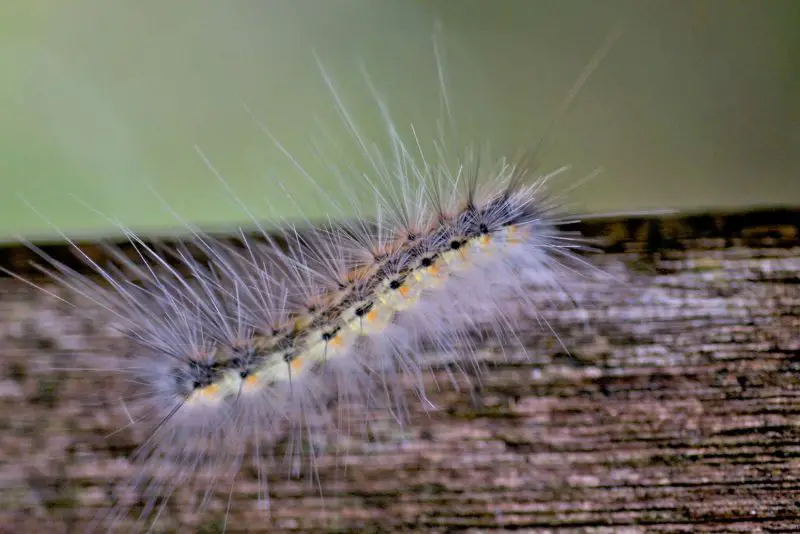
The Fall Webworm is one of the most recognizable white caterpillars in Texas, known for its communal webs that blanket the ends of tree branches. The caterpillars are pale whitish with fine hairs, sometimes appearing yellowish or greenish depending on their diet. Unlike many solitary caterpillars, they live in groups within large silken tents that expand as they feed, often giving a ghostly appearance to infested trees.
In Texas, Fall Webworms are widespread and highly adaptable, feeding on over 100 species of trees and shrubs. Common hosts include pecan, walnut, mulberry, elm, and oak. Their peak activity occurs from late summer into fall, when webs become most visible. While they can cause extensive defoliation of branch tips, the damage is mostly aesthetic and rarely threatens the survival of mature trees.
Fall Webworms are highly social in behavior, feeding together inside protective webs that shield them from predators. They consume leaves from the tips inward, leaving behind only the midribs and veins. When disturbed, they retreat deeper into their silken shelter for protection. As they grow, they shed their skins several times, enlarging the web to accommodate the expanding colony.
In Texas landscapes, these caterpillars are a common sight in both rural woodlands and urban areas. Although birds generally avoid eating them due to their hairy covering, they are an important food source for parasitic wasps and flies. After pupation, they emerge as white moths with delicate, sometimes speckled wings. Despite their nuisance factor, they are an essential part of the food web and do not pose a serious threat to healthy trees.
Salt Marsh Moth Caterpillar (Estigmene acrea)
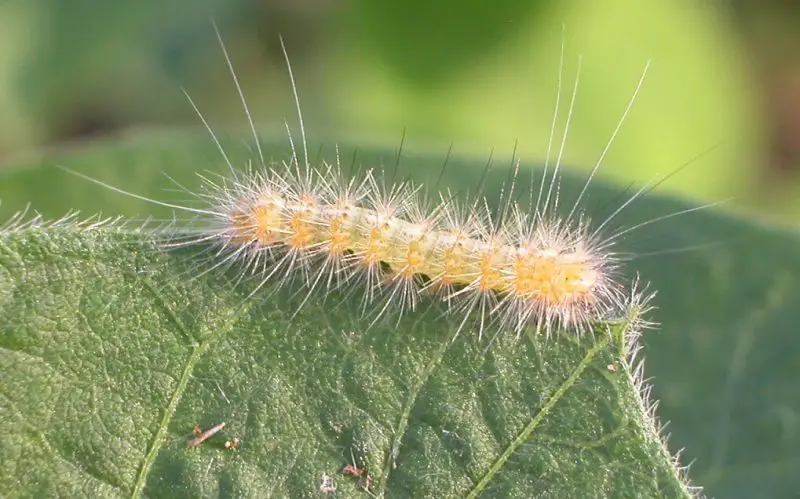
The Salt Marsh Moth Caterpillar is a variable species found throughout Texas, ranging from white to yellowish or even rusty orange in appearance. The caterpillar’s body is densely covered with long bristles that vary in color, giving each individual a slightly different look. Despite the spiny appearance, the hairs are not venomous, though they can still cause mild irritation for sensitive skin. This species is widespread and commonly encountered in fields, gardens, and along roadsides across the state.
In Texas, the Salt Marsh Moth Caterpillar feeds on an impressive variety of host plants, making it highly adaptable. It consumes the foliage of crops like cotton, soybeans, and alfalfa, as well as wild plants such as dandelions and pigweed. This broad diet means that it can thrive in both agricultural and natural environments, sometimes reaching pest status in farming regions.
Behaviorally, these caterpillars are solitary feeders, though many may be found in the same area due to their wide food preferences. They are active during the warmer months and can produce multiple generations per year in Texas. When ready to pupate, they form a silken cocoon mixed with their own hairs, usually hidden in soil or leaf litter, where they remain until emerging as striking white moths with black and orange markings.
Ecologically, Salt Marsh Moth Caterpillars serve as prey for birds, predatory beetles, and parasitic wasps. While they occasionally damage crops, their populations are generally kept in check by natural predators. In Texas, they are considered more of a minor nuisance than a major agricultural threat, except in areas where crops are heavily infested.
Virginian Tiger Moth Caterpillar (Spilosoma virginica)
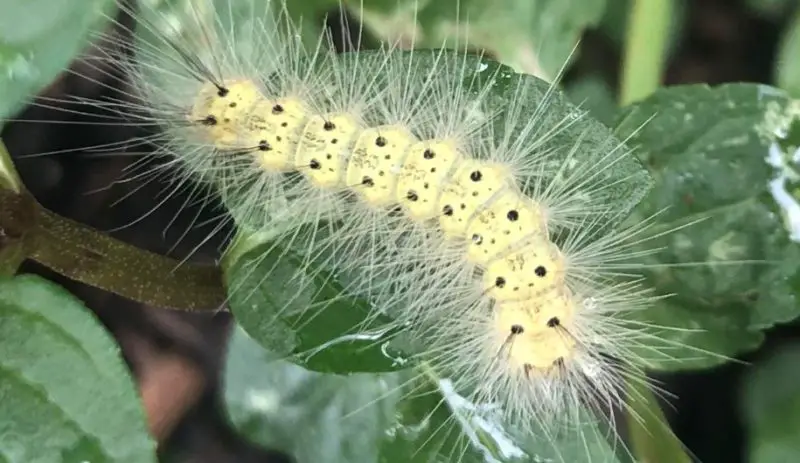
The Virginian Tiger Moth Caterpillar, often called the Yellow Woolly Bear, is another caterpillar that can appear white or pale in Texas. Its coloration ranges from creamy white to yellow-orange, with its body covered in thick, soft-looking hairs. The hairs vary in length, giving the caterpillar a fuzzy appearance that makes it one of the most recognizable woolly bear species in the region.
In Texas, the Virginian Tiger Moth Caterpillar is widespread and commonly found in fields, gardens, and open woodlands. Its diet is extremely diverse, feeding on low-growing plants such as clover, dandelion, and plantain, as well as vegetable crops and ornamental plants. This adaptability allows it to thrive in both rural and suburban landscapes, making it a frequent sight in backyards.
Behaviorally, this caterpillar is solitary and often seen wandering in search of food or a pupation site. Unlike webworms, it does not create communal shelters. It is active from late spring through fall, producing multiple generations in the warm Texas climate. When fully grown, it spins a silken cocoon in hidden spots such as leaf litter, fence posts, or under rocks, emerging later as a delicate white moth with small black dots on its wings.
Despite its harmless look, the Virginian Tiger Moth Caterpillar’s fuzzy coat can cause mild irritation if handled. However, it plays an important role in Texas ecosystems by serving as prey for birds, small mammals, and insect predators. Its wide range of food sources also makes it a resilient species, well adapted to both wild and human-modified environments.
White-Marked Tussock Moth Caterpillar (Orgyia leucostigma)
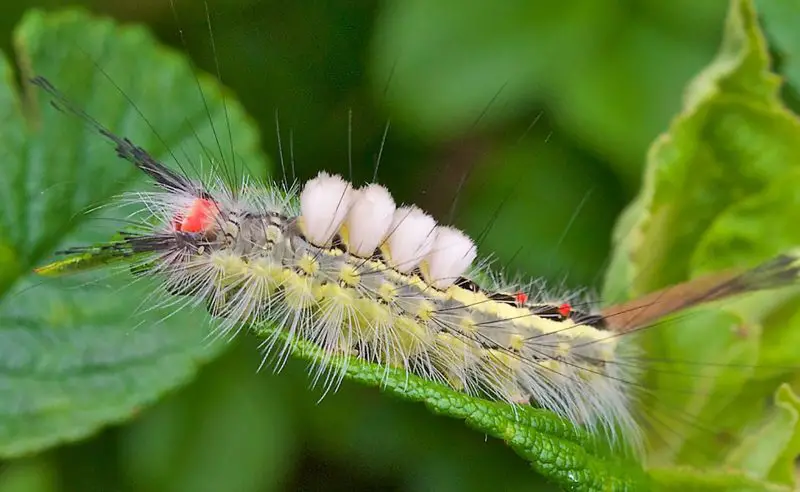
The White-Marked Tussock Moth Caterpillar is one of the most colorful and distinctive caterpillars found in Texas. Its body is usually yellow to whitish with bold black stripes, accented by four characteristic white brushlike tufts along its back. It also has a pair of long black pencil-like hairs near the head and a single tuft at the tail end, making it instantly recognizable. This combination of markings makes it one of the easiest tussock moth caterpillars to identify.
In Texas, this caterpillar is especially common in woodlands, parks, and urban areas with shade trees. It feeds on a wide range of hardwoods, including oak, elm, maple, birch, and willow. During outbreaks, they may cause significant defoliation, especially in urban landscapes where trees are planted close together. Their feeding is most noticeable in summer and early fall.
Behaviorally, the White-Marked Tussock Moth Caterpillar is an active feeder and moves about branches and leaves more visibly than many other species. It does not build communal webs but instead feeds individually, often leaving behind chewed leaves and visible frass. Once mature, it spins a cocoon that incorporates its hairs, attaching it to tree bark, fences, or man-made structures. Females of this species are wingless moths, remaining on the cocoon to lay eggs, while males emerge as brownish-gray moths with feathery antennae.
In Texas, these caterpillars are sometimes considered pests due to their heavy feeding on ornamental and shade trees. Their hairs can also cause skin irritation, making them a concern in areas with heavy human activity. Despite this, they remain a vital part of the food web, supporting bird and insect predator populations throughout the state.
FAQs about White Caterpillars in Texas
Are white caterpillars in Texas dangerous to humans?
Most white caterpillars in Texas are not dangerous, but many of them are covered in hairs or bristles that can cause mild skin irritation, rashes, or itching when touched. Species like the Hickory Tussock Moth Caterpillar and the White-Marked Tussock Moth Caterpillar are known to cause discomfort if handled. It’s best to avoid direct contact and admire them without touching.
Do white caterpillars sting?
White caterpillars in Texas do not sting in the same way that bees or wasps do, but their urticating hairs act as a defense mechanism. These hairs can break off and irritate the skin, sometimes causing a rash. Washing with soap and water and applying a mild anti-itch cream usually helps if irritation occurs.
What do white caterpillars eat in Texas?
White caterpillars are herbivores and feed on a wide variety of plants. Depending on the species, they may eat hardwood tree leaves such as oak, hickory, sycamore, or pecan. Others prefer low-growing plants, weeds, and even vegetable crops. Their feeding habits are diverse, which is why they are commonly seen in both forests and backyards.
Are white caterpillars harmful to trees?
Yes, some species of white caterpillars in Texas can cause noticeable defoliation, especially during peak summer and fall. Fall Webworms, for example, build large webs and consume leaves at the tips of branches, while White-Marked Tussock Moth Caterpillars feed heavily on hardwoods. However, healthy, mature trees usually recover without long-term damage.
When is the best time to see white caterpillars in Texas?
White caterpillars are most commonly seen from late spring through fall, with peak numbers in summer and early autumn. This is when they are actively feeding before pupating into moths. Fall Webworms are especially noticeable in late summer when their silken webs expand across tree branches.
How can I protect my garden or trees from white caterpillars?
If white caterpillars are causing damage, the best control methods include pruning branches with heavy webbing, removing caterpillars by hand while wearing gloves, and encouraging natural predators such as birds and beneficial insects. Chemical treatments are rarely necessary unless infestations are severe, as most caterpillars only cause temporary damage.
Do white caterpillars turn into moths or butterflies?
All of the common white caterpillars in Texas turn into moths, not butterflies. For example, the Fall Webworm becomes a white moth, the Salt Marsh Moth emerges as a striking white moth with black and orange markings, and the White-Marked Tussock Moth produces winged males and flightless females.

